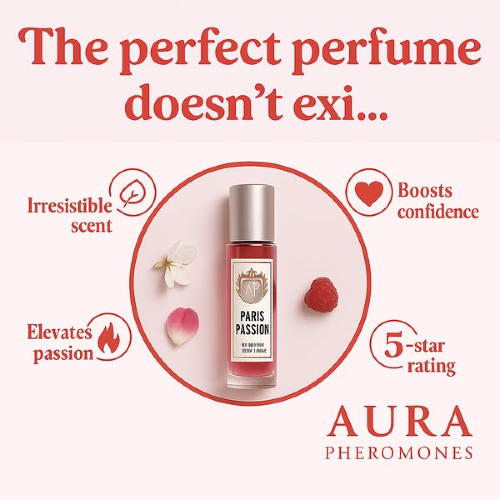Ad Messaging Taxonomy
🔬How Elite Teams Classify Hooks, Claims, and Objections, Nearly 50% of Meta Creator Ads Ignore Proven Best Practices, and more!


Howdy readers 🥰

In this newsletter, you’ll find:
🔬 Ad Messaging Taxonomy: How Elite Teams Classify Hooks, Claims, and Objections
📉 Nearly 50% of Meta Creator Ads Ignore Proven Best Practices
🏆 Ad of the Day
If you’re new to ScaleUP, then a hearty welcome! You and 50k+ CEOs, CMOS, and marketers have reached the right place. Let’s get into it, shall we? Oh! Before you forget, if someone forwarded this newsletter to you, don't forget to subscribe to our newsletter so you never miss out!

Together with Insense
Find your perfect influencers in 48 hours - who actually follow the brief!
UGC delivers 4× higher CTRs and 50% lower CPC than traditional ads.
But... trying to source & manage creators yourself is time-consuming.
You need Insense’s carefully vetted marketplace of 68,500+ UGC creators and micro-influencers from 35+ countries across the USA, Canada, Europe, APAC, and Latin America.
Major eComm brands are using Insense to find their perfect niche creators and run diverse end-to-end collaborations from product seeding and gifting to TikTok Shop and affiliate campaigns, and whitelisted ads.
- Quip saw an 85% influencer activation rate with product seeding
- Revolut partnered with 140+ creators for 350+ UGC assets
- Matys Health saw a 12x increase in reach through TikTok Spark Ads
Try Insense yourself.
Book a discovery call by July 31st and get a $200 bonus for your first campaign!

🔬 Ad Messaging Taxonomy: How Elite Teams Classify Hooks, Claims, and Objections
Top brands don’t “find winning ads.”
They engineer them through systematic classification, not guesswork. Because behind every successful ad isn’t a lucky hook, it’s a repeatable structure of message types, angles, and proof layers that compound over time.
The difference between a creative team burning cash and one printing revenue is this: The latter doesn’t just make content. They build a messaging taxonomy that turns insights into assets.
Why Most Creative Testing Fails (Even With Good Ideas)
Creative isn’t a lottery. But most teams treat it that way, throwing 10 new ads at the wall and praying for a signal. What they get instead is a spreadsheet of CTRs with no idea why anything worked.
Without classification, there’s no feedback loop. Without structure, iteration becomes roulette. That’s why elite teams build taxonomies before they build ads.
The Messaging Taxonomy Framework: Classify > Test > Scale
Here’s the system top teams use to map creative messages into strategic classes:
Once classified, every ad becomes a modular insight engine, one you can mix, remix, and scale across platforms without starting from scratch.
Try Guidde – capture your full taxonomy and ad review system as a guided visual workflow your whole team can follow. You can get the extension for free here!
How Classification Changes Creative Output Forever
Let’s say your ad wins with a “curiosity” hook and an “empowerment” emotional driver.
With a taxonomy:
- You know it wasn’t just the editing that worked; it was the messaging as well.
- You can now pair that combo with 5 new claims and 2 new formats.
- Your next 10 ads don’t feel like shots in the dark; they’re precision tests.
The compounding effect?
Instead of 1 winner per 20 tests, you get 3–4 predictable performers per batch.
Proof from the Field
- Bloom Nutrition broke down top hooks into 3 themes: lifestyle glow-ups, anti-bloat relief, and bloat embarrassment.
- Lomi mapped their objection blocks and saw “will it break down food?” outperformed “does it smell?”, shifting their testimonial content.
- Jones Road Beauty tags user-generated content by emotional tone, e.g., “relief from cakey makeup” vs. “confidence after 50,” and rotates based on the campaign angle.
These aren’t accidents. They’re output from a clear messaging architecture.
If you can’t name why an ad worked, you can’t scale it. If you can’t organize your messaging, you’ll always rely on your next “best idea.” Messaging taxonomies give your creative team superpowers: Clarity, repeatability, and speed, without sacrificing originality. Don’t just track performance. Track patterns. That’s where scale lives.

📉 Nearly 50% of Meta Creator Ads Ignore Proven Best Practices
A new CreativeX report analyzed 1.6 million ads across Meta and TikTok and found that nearly half of creator ads miss key performance guidelines. Despite creator content being seen as more authentic, many ads ignore fundamentals like early branding, proper length, and visual formatting.
The Breakdown:
1. Early branding still matters, even for creators - Only 51% of creator ads included brand mentions within the first 3 seconds, and just 14% of users watched beyond that mark. Ads that followed Meta's long-standing “brand-first” rule had a 16% higher video completion rate. 2. Most creator ads miss the ideal video length - Just 45% of creator ads fall within the recommended 15–60 second range on Meta and TikTok. Those who do see a 10% improvement in completion rate. Length missteps reduce the chances of content being watched to the end.
3. Critical content often lands outside ‘safe zones’ - Only 3% of creator ads use platform-defined safe zones for critical visuals, compared to 12% of brand ads. Misplaced messages get blocked by interface elements like buttons and captions. Ads in safe zones see a 19% boost in video completion.
Creator ads are booming, but most ignore the basics that boost performance. Authenticity isn’t enough, platforms reward content that follows their rules. Packaging the message right can drive up to 19% better results.

🏆 Ad of the Day

What Works:
1. Scroll-Stopping Hook with Emotional Bait - The headline “The perfect perfume doesn’t exi…” leverages a viral meme format to disrupt the scroll and inject humor. It activates curiosity and primes the viewer to prove the headline wrong, setting up the product as the unexpected answer.
2. Sensory and Emotional Triggers Framed as Outcomes - Instead of listing ingredients, the ad leans into emotional transformations: “Boosts confidence,” “Elevates passion,” “Irresistible scent.” These are not features, they’re lifestyle outcomes, which instantly tell the viewer what this scent does to people, not just how it smells.
Broader Insights:
This ad doesn’t just market a perfume, it markets transformation, attraction, and emotional uplift in one scroll-stop. By combining meme-style hook, emotional outcomes, and romantic minimalism, Aura reframes pheromone perfume from gimmicky to aspirational.

Advertise with Us
Wanna put out your message in front of over 50,000 best marketers and decision makers?

We are concerned about everything DTC and its winning strategies. If you liked what you read, why not join the 50k+ marketers from 13k+ DTC brands who have already subscribed? Just follow this.
At ScaleUP, we care about our readers and want to provide the best possible experience. That's why we always look for ways to improve our content and connect with our audience. If you'd like to stay in touch, be sure to follow us EVERYWHERE🥰
Thanks for your support :) We'll be back again with more such content 🥳

